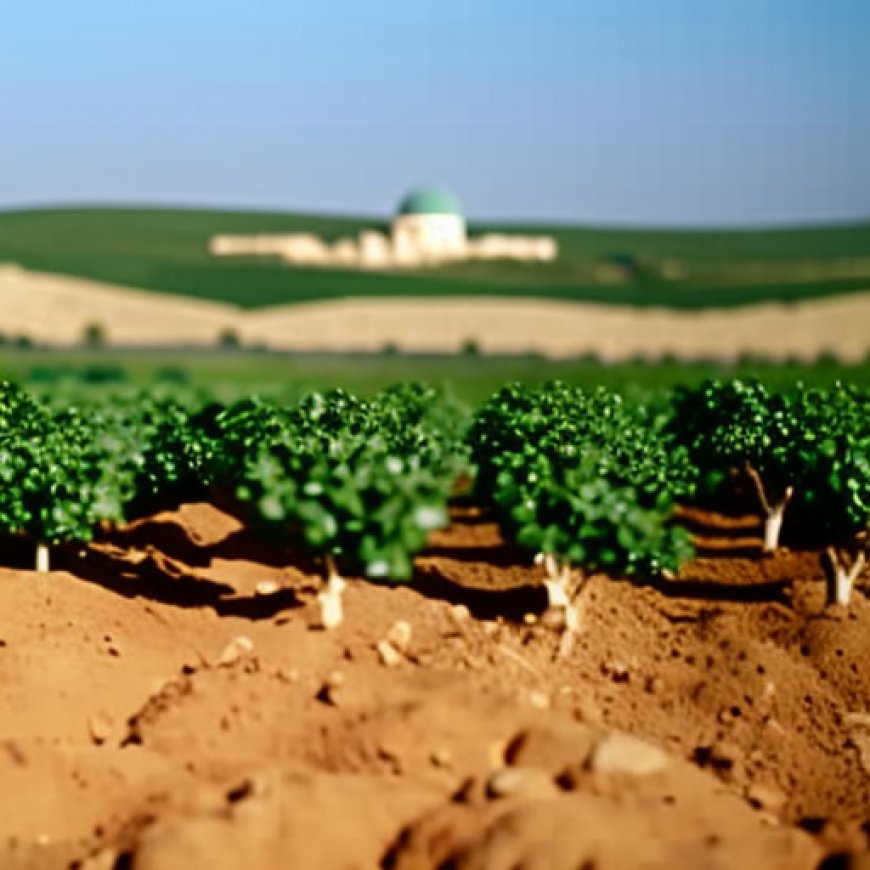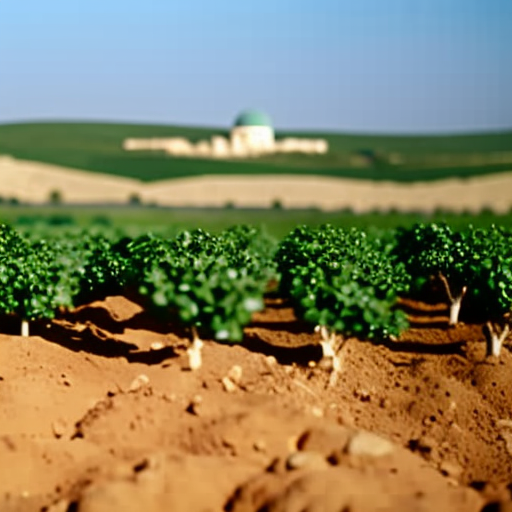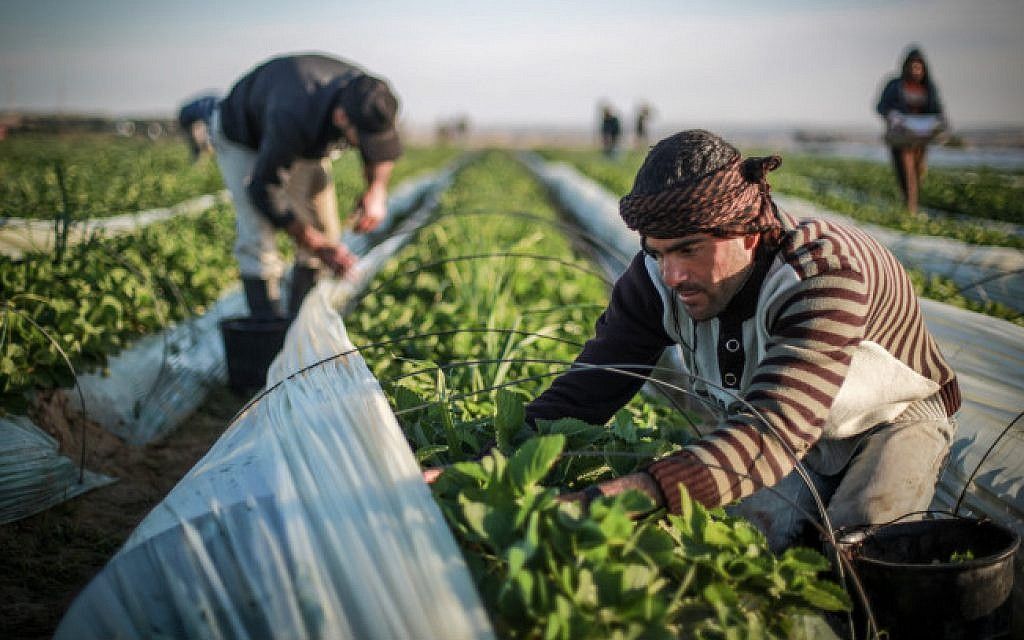Palestine relies heavily on Turkish agricultural products amid Israeli blockade
Palestine relies heavily on Turkish agricultural products amid Israeli blockade Türkiye Newspaper


Palestinian Reliance on Turkish Products
Palestinian official Mohammed Abidin highlighted the significant reliance of Palestine on Turkish products, particularly fertilizers and agricultural pesticides.
Abidin, a member of the Palestine Industrial Federation Board of Directors, mentioned that Türkiye ranks third in imports to Palestine, following China and Israel.
Due to the circumstances where all goods imported to Palestine must pass through Israeli ports, the Palestinian Authority faces customs duties imposed by these ports.
Abidin also noted a notable increase of about 15% in Turkish product imports to Palestine since the commencement of Israel’s attacks on Gaza on Oct. 7.
He attributed part of this rise to the instability in the Red Sea, with Houthi attacks and violations affecting cargo ships passing through. This has made Türkiye a swift solution and a significant alternative source for materials and products that were previously imported from China.
Farmers use Turkish products
Palestinian farmer Mohammad Ebu Sabit echoed Abidin’s sentiments, praising the effectiveness of Turkish fertilizers and pesticides. Ebu Sabit, who operates a five-acre farm in the Jordan Valley region of the West Bank, has been using Turkish agricultural products for the past decade.

Ebu Sabit said that he, along with many Palestinian farmers, now heavily relies on Turkish fertilizers and pesticides for his crops, which include tomatoes, cucumbers, and zucchinis.
The backdrop of these discussions lies in Israel’s ongoing military offensive in Gaza, sparked by a cross-border attack by Hamas in early October. The conflict has resulted in devastating casualties among Palestinians, with over 33,100 killed and 75,800 injured.
Furthermore, Israel’s blockade on Gaza has left the population, especially in the northern region, grappling with severe shortages of food and essential supplies.
Source: Newsroom
SDGs, Targets, and Indicators
| SDGs | Targets | Indicators |
|---|---|---|
| SDG 2: Zero Hunger | 2.1 By 2030, end hunger and ensure access by all people, in particular the poor and people in vulnerable situations, including infants, to safe, nutritious and sufficient food all year round | – No specific indicators mentioned in the article |
| SDG 8: Decent Work and Economic Growth | 8.1 Sustain per capita economic growth in accordance with national circumstances and, in particular, at least 7 percent gross domestic product growth per annum in the least developed countries | – No specific indicators mentioned in the article |
| SDG 12: Responsible Consumption and Production | 12.2 By 2030, achieve the sustainable management and efficient use of natural resources | – No specific indicators mentioned in the article |
| SDG 17: Partnerships for the Goals | 17.11 Significantly increase the exports of developing countries, in particular with a view to doubling the least developed countries’ share of global exports by 2020 | – No specific indicators mentioned in the article |
Analysis:
1. Which SDGs are addressed or connected to the issues highlighted in the article?
The issues highlighted in the article are connected to the following SDGs:
- SDG 2: Zero Hunger
- SDG 8: Decent Work and Economic Growth
- SDG 12: Responsible Consumption and Production
- SDG 17: Partnerships for the Goals
2. What specific targets under those SDGs can be identified based on the article’s content?
Based on the article’s content, the following targets can be identified:
- Target 2.1: By 2030, end hunger and ensure access by all people, in particular the poor and people in vulnerable situations, including infants, to safe, nutritious and sufficient food all year round.
- Target 8.1: Sustain per capita economic growth in accordance with national circumstances and, in particular, at least 7 percent gross domestic product growth per annum in the least developed countries.
- Target 12.2: By 2030, achieve the sustainable management and efficient use of natural resources.
- Target 17.11: Significantly increase the exports of developing countries, in particular with a view to doubling the least developed countries’ share of global exports by 2020.
3. Are there any indicators mentioned or implied in the article that can be used to measure progress towards the identified targets?
No specific indicators are mentioned or implied in the article that can be used to measure progress towards the identified targets.
4. SDGs, Targets, and Indicators Table:
| SDGs | Targets | Indicators |
|---|---|---|
| SDG 2: Zero Hunger | 2.1 By 2030, end hunger and ensure access by all people, in particular the poor and people in vulnerable situations, including infants, to safe, nutritious and sufficient food all year round | No specific indicators mentioned in the article |
| SDG 8: Decent Work and Economic Growth | 8.1 Sustain per capita economic growth in accordance with national circumstances and, in particular, at least 7 percent gross domestic product growth per annum in the least developed countries | No specific indicators mentioned in the article |
| SDG 12: Responsible Consumption and Production | 12.2 By 2030, achieve the sustainable management and efficient use of natural resources | No specific indicators mentioned in the article |
| SDG 17: Partnerships for the Goals | 17.11 Significantly increase the exports of developing countries, in particular with a view to doubling the least developed countries’ share of global exports by 2020 | No specific indicators mentioned in the article |
Behold! This splendid article springs forth from the wellspring of knowledge, shaped by a wondrous proprietary AI technology that delved into a vast ocean of data, illuminating the path towards the Sustainable Development Goals. Remember that all rights are reserved by SDG Investors LLC, empowering us to champion progress together.
Source: turkiyenewspaper.com

Join us, as fellow seekers of change, on a transformative journey at https://sdgtalks.ai/welcome, where you can become a member and actively contribute to shaping a brighter future.







